
EUROPEAN JOURNAL OF MASS SPECTROMETRY
Scope & Guideline
Exploring Innovative Frontiers in Mass Spectrometry
Introduction
Aims and Scopes
- Mass Spectrometry Methodology Development:
The journal publishes papers that introduce new methodologies or improve existing techniques in mass spectrometry, including novel ionization methods, mass analyzers, and data analysis techniques. - Application of Mass Spectrometry in Biomedicine:
A significant focus is on the application of mass spectrometry in the biomedical field, including drug development, metabolomics, proteomics, and biomarker discovery. - Environmental and Food Analysis:
Research related to the use of mass spectrometry for environmental monitoring and food safety is also prevalent, showcasing its importance in detecting contaminants and analyzing complex matrices. - Theoretical and Computational Studies:
The journal includes studies that delve into the theoretical underpinnings of mass spectrometry, including simulations and computational methods that enhance understanding of ion behavior and fragmentation. - Educational Approaches in Mass Spectrometry:
There is a growing emphasis on educational methodologies, with papers discussing innovative teaching strategies for mass spectrometry, indicating a commitment to training the next generation of scientists.
Trending and Emerging
- Metabolomics and Proteomics:
There is a notable increase in studies focusing on metabolomics and proteomics, particularly in clinical settings, reflecting the growing importance of these fields in understanding disease mechanisms and developing personalized medicine. - Advanced Data Analysis Techniques:
The journal has seen a rise in publications that employ advanced data analysis techniques, including machine learning and statistical methods to interpret complex mass spectrometry data, indicating a shift towards data-driven research. - Environmental and Health Monitoring:
Research in environmental analysis and health monitoring using mass spectrometry is trending upward, showcasing the technique's critical role in public health and safety, particularly in the context of emerging contaminants. - Miniaturization and Field Applications:
There is an emerging interest in the miniaturization of mass spectrometry instruments for field applications, enabling real-time analysis in various environments, from clinical to environmental settings. - Integration of Mass Spectrometry with Other Techniques:
The trend towards integrating mass spectrometry with complementary techniques such as chromatography, ion mobility spectrometry, and imaging methods is gaining traction, enhancing the capability and versatility of mass spectrometric analysis.
Declining or Waning
- Basic Instrumentation Studies:
Research focusing solely on basic instrumentation without significant methodological advancements or applications has seen a decrease, as the field moves towards more application-driven studies. - Traditional Analytical Techniques:
There appears to be a waning interest in traditional analytical techniques that do not incorporate mass spectrometry or that rely heavily on older methods without integration of newer technologies. - Basic Theoretical Papers:
While theoretical studies are still important, there seems to be a decline in basic theoretical papers that do not connect to practical applications or advancements in mass spectrometry methodologies.
Similar Journals
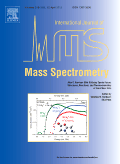
INTERNATIONAL JOURNAL OF MASS SPECTROMETRY
Pioneering Discoveries in Mass Spectrometry TechniquesINTERNATIONAL JOURNAL OF MASS SPECTROMETRY, published by Elsevier, is a pivotal platform in the field of mass spectrometry, advancing the understanding and application of this essential analytical technique. With an ISSN of 1387-3806 and an E-ISSN of 1873-2798, the journal has established its significance since its inception in 1998 and continues to contribute valuable insights to the scientific community through its convergence of knowledge extending to 2024. Its scope encompasses critical areas such as condensed matter physics, instrumentation, physical and theoretical chemistry, and spectroscopy, earning recognition across various ranks and quartiles, specifically holding a Q3 classification in multiple categories for 2023. Although it does not currently operate under an open access model, the journal remains an essential resource for researchers, professionals, and students striving to deepen their expertise and stay abreast of the latest methodological developments and discoveries in mass spectrometry. With its commitment to quality and innovation, the INTERNATIONAL JOURNAL OF MASS SPECTROMETRY plays a crucial role in supporting advancements in analytical chemistry and instrumental analysis.
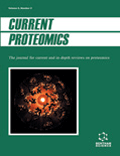
Current Proteomics
Connecting Researchers in the Dynamic World of ProteomicsCurrent Proteomics is a distinguished journal dedicated to the dynamic field of proteomics, offering researchers and professionals a platform to disseminate innovative findings and comprehensive reviews. Published by Bentham Science Publishers Ltd, this journal caters to a global audience and serves as an essential resource for students, academics, and industry experts interested in advances in biochemistry and molecular biology. With an ISSN of 1570-1646 and an E-ISSN of 1875-6247, the journal has established itself in various research categories, achieving a Q4 ranking in both Biochemistry and Molecular Biology as of 2023. While the impact factor and H-index data are not specified, its Scopus ranking reflects a competitive position in its fields, with percentiles in the 12th to 16th range. Although not an open-access journal, Current Proteomics is vital for fostering ongoing dialogue and collaboration in proteomic research, encouraging contributions that explore cutting-edge methodologies and applications. Researchers are invited to share their insights and contribute to this evolving discipline, thus enhancing the collective understanding of proteomics within the scientific community.

Separation Science Plus
Advancing analytical horizons in separation science.Separation Science Plus is an emerging academic journal dedicated to advancing the field of analytical chemistry and separation science. Published by WILEY-VCH Verlag GmbH, this journal provides a platform for researchers to disseminate high-quality studies and reviews that address innovative techniques and breakthroughs in separation methodologies. With its ISSN 2573-1815, the journal has made significant inroads since its inception in 2018, encompassing a convergence period until 2024. Despite currently holding a Q3 ranking in Analytical Chemistry and a Q4 ranking in Filtration and Separation, its dedication to publishing impactful research makes it a vital resource for professionals and students alike. The journal operates under the robust scholarly reputation of WILEY, which is known for its commitment to excellence in scientific communication. Researchers interested in the latest advancements in separation techniques will find Separation Science Plus an essential read, fostering the exchange of knowledge and facilitating greater understanding within this specialized field.
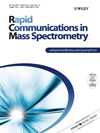
RAPID COMMUNICATIONS IN MASS SPECTROMETRY
Elevating standards in analytical and organic chemistry.RAPID COMMUNICATIONS IN MASS SPECTROMETRY is a leading journal published by Wiley, focusing on the rapidly evolving field of mass spectrometry and its applications across various domains, including analytical, organic, and spectroscopy chemistry. With its ISSN 0951-4198 and an E-ISSN of 1097-0231, the journal has firmly established itself as a reputable source of innovative research since its inception in 1987, and is set to continue until 2024. As evidenced by its 2023 Scopus rankings, the journal occupies a solid position in the realms of analytical chemistry (Q3), organic chemistry (Q3), and spectroscopy (Q3), reflecting its impact among a diverse audience of researchers and professionals. Although it is not an open-access publication, the findings shared within its pages are pivotal for advancing knowledge and practical applications in mass spectrometry, making it an essential resource for students and experts aiming to stay abreast of the latest scientific developments.
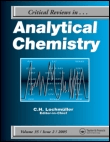
CRITICAL REVIEWS IN ANALYTICAL CHEMISTRY
Elevating Research Standards in Analytical Techniques.Critical Reviews in Analytical Chemistry, published by Taylor & Francis Inc, stands as a pivotal journal in the field of analytical chemistry, contributing significantly to its advancement since its inception in 1989. With an impressive Q1 ranking in the 2023 analytical chemistry category, it positions itself among the top 15 journals in the field, reflecting its high impact and relevance, as evidenced by a 90th percentile Scopus rank. This esteemed journal is dedicated to publishing comprehensive reviews that synthesize current research and emerging methods in analytical techniques, making it an invaluable resource for researchers, professionals, and students alike. With the goal of fostering innovation and collaboration, Critical Reviews in Analytical Chemistry continues to address challenges and breakthroughs within the sphere of analytical methodologies, ensuring its authors and readers remain at the forefront of scientific discovery.
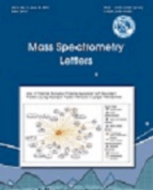
Mass Spectrometry Letters
Transforming Research into Accessible Knowledge.Mass Spectrometry Letters is a pioneering open-access journal published by the Korean Society for Mass Spectrometry, specializing in the diverse fields of analytical chemistry, biochemistry, and spectroscopy. Established in 2010, this journal aims to disseminate groundbreaking research and advancements in mass spectrometry and its applications across various scientific domains. Though currently categorized in the Q4 quartile in key analytical fields, Mass Spectrometry Letters serves as an essential platform for researchers, professionals, and students to share innovative methodologies, emerging trends, and practical applications of mass spectrometry, thus fostering collaboration and advancing knowledge in the scientific community. With a commitment to open access, articles published since 2010 are readily available, enabling widespread distribution and engagement within the international research community. Located in Daejeon, South Korea, and actively converging research through 2024, the journal holds the potential to grow its impact and relevance within the dynamic landscape of mass spectrometry.
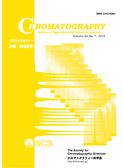
Chromatography
Exploring the frontiers of chromatography and its applications.Chromatography is an esteemed journal published by the SOC CHROMATOGRAPHIC SCIENCES, dedicated to advancing the field of chromatographic techniques and their applications across various disciplines, including analytical chemistry, biochemistry, and environmental science. By facilitating the exchange of high-quality research, Chromatography plays a pivotal role in enhancing methodologies and technologies that drive innovation in sample analysis. While the journal is not currently open access, it maintains a rigorous peer-review process, ensuring the publication of valuable and impactful studies. Researchers, professionals, and students alike can benefit from its comprehensive coverage of chromatography-related advancements, making it a vital resource for anyone engaged in this dynamic area of study.

Journal of Mass Spectrometry and Advances in the Clinical Lab
Fostering Collaboration in Laboratory SciencesJournal of Mass Spectrometry and Advances in the Clinical Lab, published by Elsevier, serves as a premier resource within the fields of clinical biochemistry, medical laboratory technology, microbiology, and spectroscopy. Launched in 2021 with an Open Access model, this journal enhances the accessibility of innovative research, making it an ideal platform for researchers, practitioners, and students alike. With an impressive impact factor reflected in its quartile rankings—Q2 in Clinical Biochemistry and Microbiology, and Q1 in Medical Laboratory Technology and Spectroscopy—this journal ensures high visibility and credibility. The journal's diverse indexing and significant standings in Scopus rankings highlight its commitment to advancing knowledge and fostering collaboration among professionals in laboratory sciences. Endorsed by a robust editorial board comprising leading experts, the journal aims to disseminate cutting-edge findings and methodologies, contributing to significant advancements in clinical and scientific laboratory practices. By bridging theoretical frameworks and practical applications, this journal plays a crucial role in the continuous evolution of laboratory technologies, thereby empowering readers to push the boundaries of research and innovation in their fields.
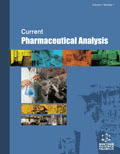
Current Pharmaceutical Analysis
Navigating the Evolving Landscape of Drug DevelopmentCurrent Pharmaceutical Analysis, published by Bentham Science Publishers Ltd, is a vital resource for professionals and researchers in the fields of Pharmaceutical Science, Biochemistry, and Molecular Medicine. Established in 2006, this peer-reviewed journal aims to provide a platform for the latest advancements and analytical methodologies in pharmaceutical research and drug development. Over the years, it has garnered attention for its rigorous scrutiny and contributions to the landscape of pharmacology, evidenced by its quartile placements in various categories, most notably Q3 in Pharmaceutical Science. Despite its current rankings placing it in the lower quartile in several disciplines, the journal remains an essential venue for both emerging and established researchers seeking to disseminate their findings. With the widespread accessibility of its articles, researchers, professionals, and students can engage with cutting-edge studies to foster innovation in pharmaceutical analysis. For access to the latest research contributions, readers can explore the digital archive and stay updated on pivotal discussions shaping the future of the pharmaceutical sciences.
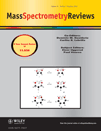
MASS SPECTROMETRY REVIEWS
Elevating Standards in Spectroscopic AnalysisMASS SPECTROMETRY REVIEWS, published by Wiley, is a premier academic journal dedicated to advancing the field of mass spectrometry and its applications across a multitude of scientific disciplines. With an ISSN of 0277-7037 and an E-ISSN of 1098-2787, the journal has established itself as a vital resource within the realms of Analytical Chemistry, Biochemistry, Genetics, Condensed Matter Physics, and Spectroscopy, achieving Q1 status across these categories in 2023. As a testament to its significant contribution to scholarly research, it boasts impressive Scopus rankings, including a rank of #2 out of 76 in Chemistry - Spectroscopy and #4 out of 156 in Chemistry - Analytical Chemistry, placing it in the 97th percentile and above. Emphasizing high-quality, peer-reviewed research, MASS SPECTROMETRY REVIEWS serves as an essential platform for researchers, professionals, and students aiming to stay abreast of cutting-edge developments and methodologies in mass spectrometry. The journal is committed to fostering a deeper understanding of mass spectrometric techniques while also contributing to interdisciplinary advancements, making it a valuable addition to any academic library. Authors seeking to disseminate their work in a journal with a strong reputation and impact in the scientific community will find MASS SPECTROMETRY REVIEWS an ideal venue.